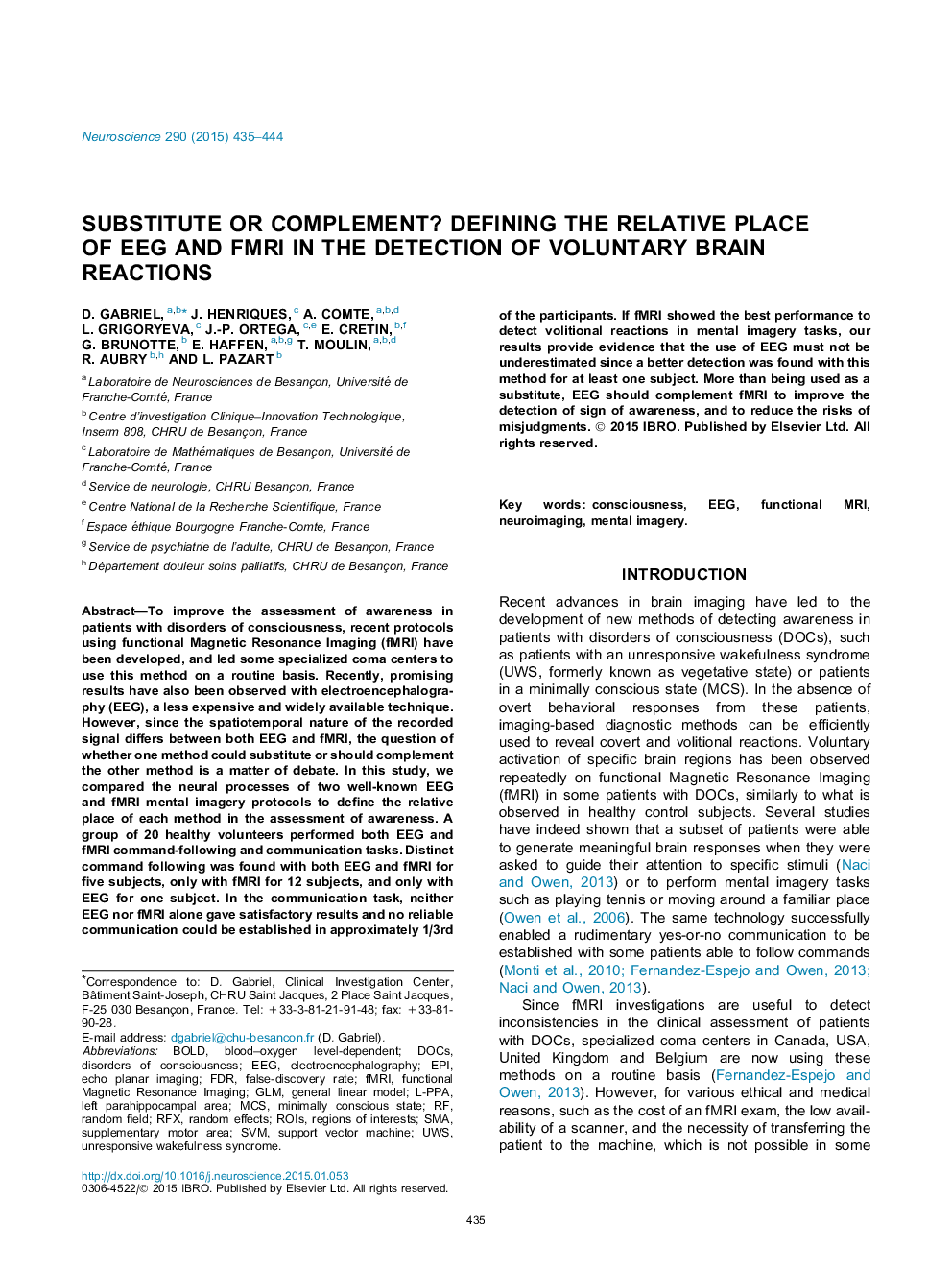| کد مقاله | کد نشریه | سال انتشار | مقاله انگلیسی | نسخه تمام متن |
|---|---|---|---|---|
| 6272675 | 1614786 | 2015 | 10 صفحه PDF | دانلود رایگان |

- Both neuroimagery methods (EEG and fMRI) cannot detect volitional brain reactions in all subjects.
- For some subjects, command-following can be obtained only with one neuroimagery method.
- Neuroimagery-based communication is unsatisfactory both with EEG and fMRI.
- EEG and fMRI should be used as complement to detect signs of awareness.
To improve the assessment of awareness in patients with disorders of consciousness, recent protocols using functional Magnetic Resonance Imaging (fMRI) have been developed, and led some specialized coma centers to use this method on a routine basis. Recently, promising results have also been observed with electroencephalography (EEG), a less expensive and widely available technique. However, since the spatiotemporal nature of the recorded signal differs between both EEG and fMRI, the question of whether one method could substitute or should complement the other method is a matter of debate. In this study, we compared the neural processes of two well-known EEG and fMRI mental imagery protocols to define the relative place of each method in the assessment of awareness. A group of 20 healthy volunteers performed both EEG and fMRI command-following and communication tasks. Distinct command following was found with both EEG and fMRI for five subjects, only with fMRI for 12 subjects, and only with EEG for one subject. In the communication task, neither EEG nor fMRI alone gave satisfactory results and no reliable communication could be established in approximately 1/3rd of the participants. If fMRI showed the best performance to detect volitional reactions in mental imagery tasks, our results provide evidence that the use of EEG must not be underestimated since a better detection was found with this method for at least one subject. More than being used as a substitute, EEG should complement fMRI to improve the detection of sign of awareness, and to reduce the risks of misjudgments.
Journal: Neuroscience - Volume 290, 2 April 2015, Pages 435-444